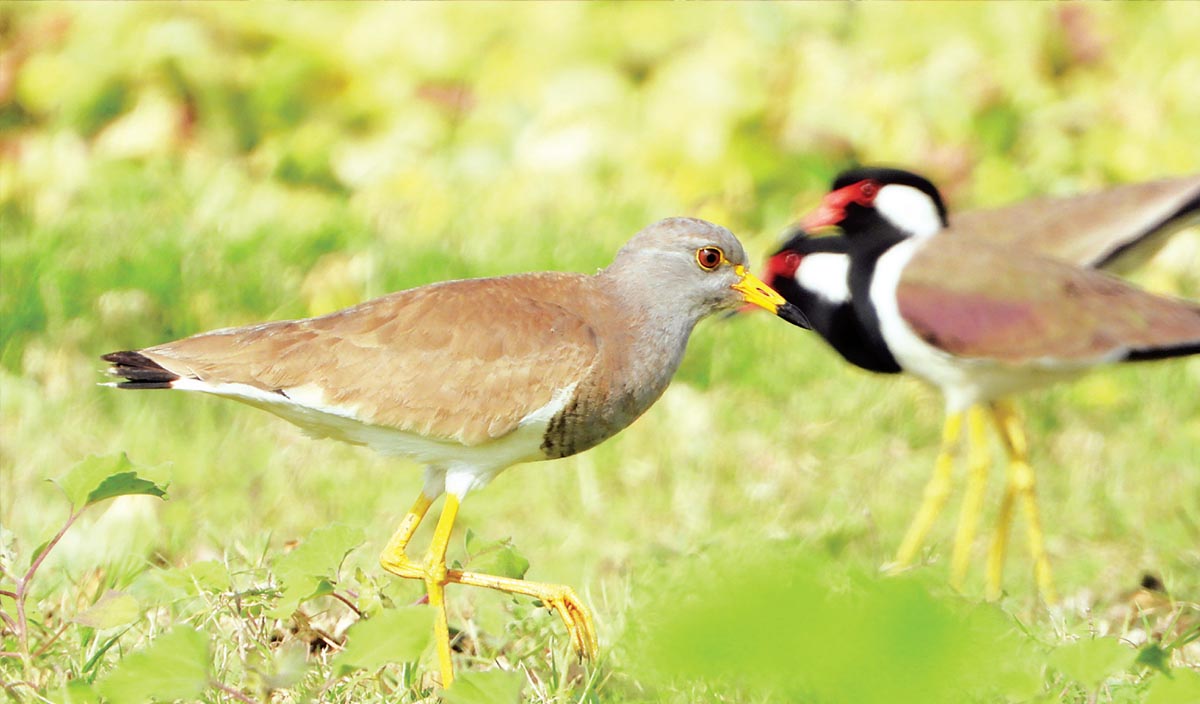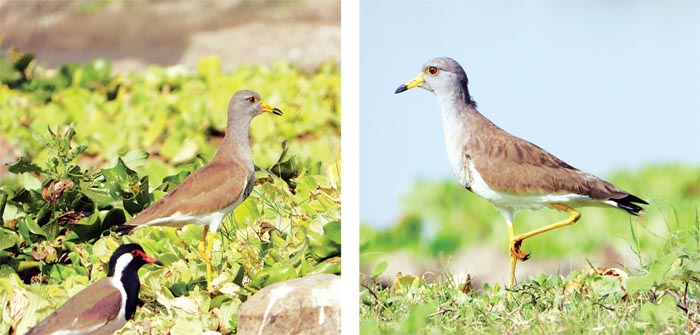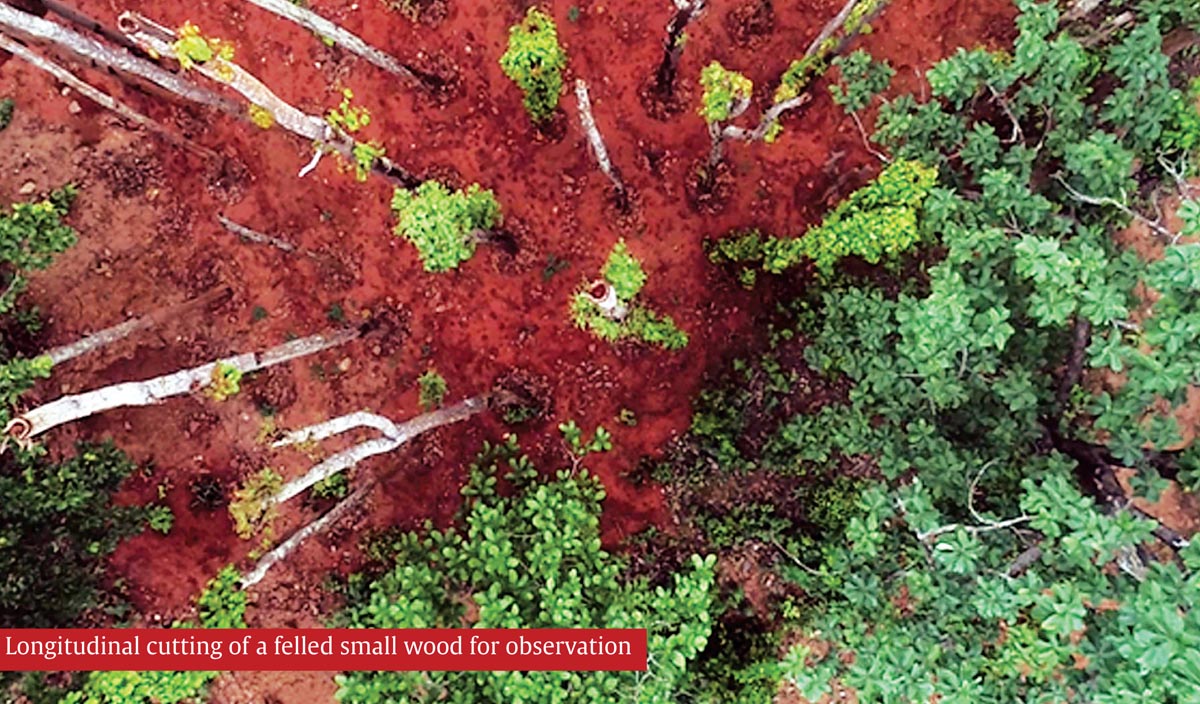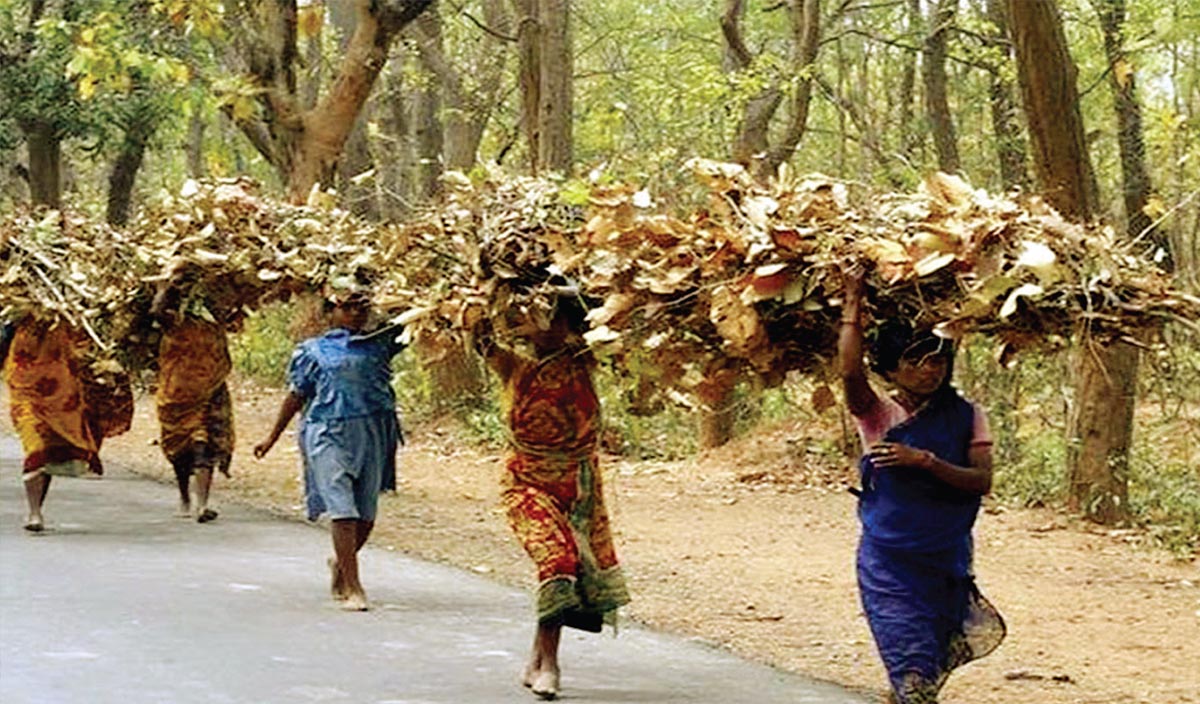
Guardians of Grey Headed
Observations by CA. Shomi Gupta & Yogesh More
The Grey Headed Lapwing (Vanellus cinereus) is a fascinating bird, and Our captivating observations from 17thMarch 2024 to 10thApril 2024 provide a glimpse into its intriguing behavior. We would like to mention that; While Observing Grey Headed Lapwing regularly, we were also noticing a Pair of Black-necked stork (Ephippiorhynchus asiaticus); A Near Threatened Species, in the same Habitate but at a distance. Foraging, Fishing and Resting in the company of Painted Storks (majorly). We would like to mention that These Storks stayed in the same area during winters of year 2022-2023 also; and stayed up to the Monsoons of 2023. Now coming back to Grey Headed Lapwing (Vanellus cinereus); In Bhopal, we expect this winter visitor generally in October and March as a passage migrant or better to say as a Straggler towards its Wintering Grounds from Breeding Grounds, and Back.
1. Company of Red Wattled Lapwings:
- As observed earlier also; The Grey Headed Lapwing seems to enjoy the company & association of Red Wattled Lapwings (Vanellus indicus), which are resident birds in the area.
- But not only this, these Red Wattled Lapwings act as guardians, providing cover and protection for the Grey Headed Lapwing. Mostly, we noticed 3 Particular individuals of Red Wattled Lapwing; were doing this.
- When the Grey Headed Lapwing forages, the Red Wattled Lapwings keep a watchful eye, ensuring her safety.
- It should be noted that Grey Headed Lapwing feeds on Snipe Grounds; i.e., adjacent to the banks of water bodies in low vegetation and loose mud. The Bird forages on insects, worms and mollusks and is a watchful & vigilantfeeder.
- We noticed that, when approached towards Grey Headed, the Bird while making a distance from us, slowly walks away keeping its back towards us. Perhaps because its back is more camouflaged with the surroundings and difficult to locate once moved out. After making the distance Bird use to look towards us for our positons slightly

2. Observation and Behavior:
- We patiently observed the Grey Headed Lapwing, maintaining a respectful distance.
- Despite our presence, the Grey Headed Lapwing remained undisturbed, allowing us to capture some beautiful moments.
- However, the vigilant Red Wattled Lapwings resumed their protective role when we breached the minimum allowable distance. In fact, a few times they came in front of our Lense.
- Their behavior suggests a strong bond between these lapwing species.
3. Intriguing Interaction:
- Once, The Grey-Headed Lapwing flew a distance after foraging, and the RedWattled Lapwings followed.
- They bomb-dived her with noise, urging her to sit in a hidden position.
- Although no apparent threat was visible, their actions indicate a coordinated effort to keep her safe.
4. Our Acceptance by Both the Species.
- One fine day, very slowly we approached the Grey Headed Lapwing at close quarters. Undisturbed, we allowed her to become comfortable in our presence.
- Somehow, after few minutes the bird itself came very close to us breachingminimum lens distance.
- And, Preened in a relaxed mode, and slept in front of us pressing itself in Ground, legs folded.
- By this time Red Wattled also accepted us and started ignoring us and became busy in their own business.
- We decided that it is the Best time to leave the Place; cherishing those blissful moments.
- These interactions between different bird species are a testament to the intricacies of nature.
5. Other Observations :
- We observed Grey-Headed Lapwing from 17th March 2024 to 10thApril 2024. After that, we couldn’t spot the Bird from 13th April 2024 onwards. So we assume that the Bird stayed there for 25 days.
- Such a long stay of Bird surprised us. We were curious to watch; though known to be a Passage Migrant here, whether the Bird would stay here during its breeding period also.
- Though the Bird and its activites looks to be completely healthy, but perhaps The Bird did not feel fit to fly for longer distances, so might stay here even during its breeding period.
- During this period, temperatures rose to 35 degrees, accompanied by excessive heat and sunlight.
- Though; The bird’s behavior suggested it might stay longer, But it eventually followed its usual migration and breeding instincts.
- The day it left coincided with heavy storms and rain in Bhopal.
- The Grey-Headed Lapwing is thus a passage migrant in Our region.
Related Posts
Strangulation by cementing is the silent killer of trees in urban environments
Strangulation by cementing is the silentkiller of trees in urban environments By Sundararaj R, Swetha…
Tree Translocation of 1000 trees in Balliguda Forest Division
Tree Translocation of 1000 trees in Balliguda Forest Division By Vishwanath Neelannavar, IFS As per…
Participation of women in Natural Resource Management
Participation of women in Natural Resource Management By Anubha Srivastav and Anita Tomar Natural Resource…
Vulture – A lost magnificence
Vulture – A lost magnificence By Nitish Agrawal Madhya Pradesh has a rich diversity of…




